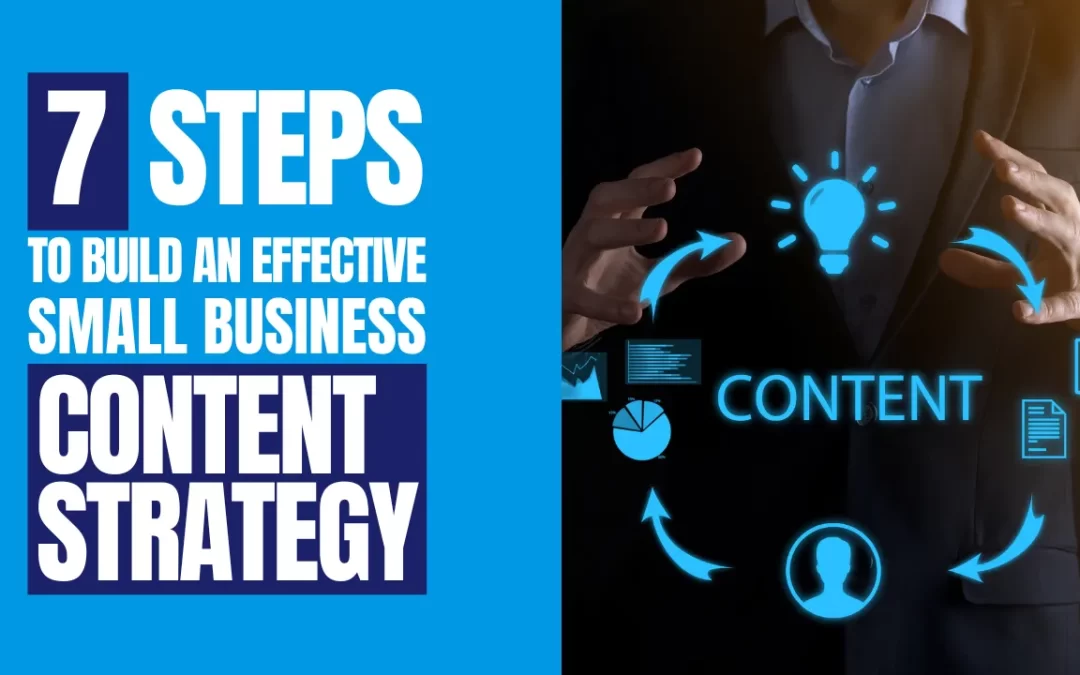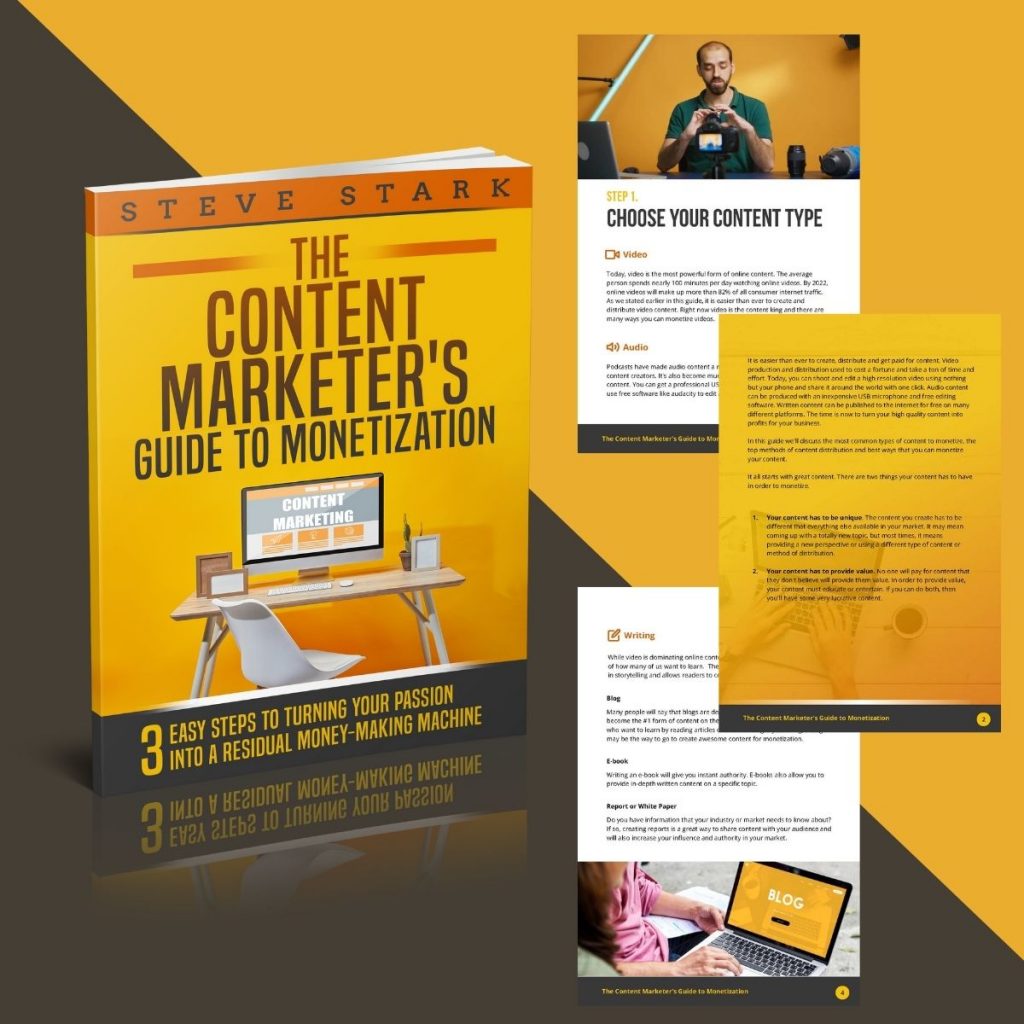Having an effective content strategy is so important for small businesses looking to establish and grow their online presence. In this blog post, we will explore the key steps involved in creating a winning content strategy that drives results.
We’ll look at defining your target audience, setting goals, creating valuable content, optimizing for SEO, promoting your content, and measuring success.
1. Defining Your Target Audience

To create content that resonates with your audience, it’s essential to clearly define your target market. Conduct thorough market research and competitor analysis to gain insights into your potential customers’ preferences and behaviors.
Creating buyer personas helps you know your audience better, so you can customize your content to meet their specific needs. Buyer personas are a detailed descriptions of someone who represents your target audience.
How old are they? Are they married? Do they have kids? Where do they hang out online? All of these details and more are important to targeting your audience.
The clearer your buyer personas, the better your content will be at attracting the right people.
When you get to know your audience, you will better understand their pain points. You need to understand their problems and offer a solution that meets their needs.
2. Setting Clear Goals and Objectives

Define specific goals for your content strategy and align them with your overall business objectives. Are you aiming to increase brand awareness, generate leads, or drive conversions?
Setting clear and measurable goals will provide focus and direction for your content creation efforts. Identify key performance indicators (KPIs) to track your progress and ensure your strategy stays on track.
Here are a few examples of KPIs for increasing brand awareness, generating leads and driving conversions.
Brand Awareness KPIs:
- Social Media Reach: Measure the number of people who have been exposed to your brand’s social media content.
- Website Traffic: Track the increase in unique visitors to your website, indicating greater brand visibility.
Lead Generation KPIs:
- Conversion Rate: Calculate the percentage of website visitors who take a desired action, such as filling out a lead form or subscribing to a newsletter.
- Lead Quality: Assess the quality of leads based on factors such as demographics, engagement level, and potential for conversion.
Conversion KPIs:
- Sales Revenue: Measure the total revenue generated through conversions, indicating the direct impact on your business’s bottom line.
- Average Order Value (AOV): Track the average value of each customer’s purchase, helping you identify opportunities for upselling or cross-selling.
3. Creating Valuable and Relevant Content

Content is the heart of any successful content strategy. Understand your target audience’s pain points, interests, and needs, and develop content that provides value and relevance.
Plan your content in advance by creating a content calendar and deciding how and when you will distribute your content. Check out and make a copy of our Content Calendar Template in Google Sheets.
You can appeal to different audiences and keep your content strategy interesting and captivating by using different types of content. Blogs, videos, infographics and social posts are great ways to demonstrate your expertise. Choose the type or types of content that best fit you and your business. This is something you need to be consistent with so make sure you can commit to it.
Creating value driven content also allows you to build authority in your niche. Your audience will get to know, like and trust you for providing content that is meaningful to them.
4. Optimizing Content for Search Engines (SEO)

To ensure your content reaches a wider audience, it’s very important to optimize it for search engines. Doing research to find relevant keywords will help search engines identify when people are searching in your niche. You need to incorporate the keywords naturally into your content, meta tags, headings, and URLs.
Building high-quality backlinks from reputable sources and optimizing your internal linking structure can also improve your content’s search engine visibility.
Contact website owners in your field and request them to include your link in their site’s content. You can do the same for them and help the authority of both websites.
5. Create a Call-To-Action

A call-to-action is another key element of your content strategy that prompts your audience to take a specific action. It guides them towards the next step in their customer journey, whether it’s making a purchase, signing up for a newsletter, or contacting your business. Here are some tips on how you can create an effective call-to-action:
- Clear and Compelling Language: Use concise and persuasive language that clearly communicates the desired action. For example, “Shop Now,” “Download Your Free Guide,” or “Subscribe for Exclusive Updates.”
- Placement and Visibility: Position your call-to-action prominently within your content, ensuring it stands out and is easily visible to your audience. Consider using contrasting colors or design elements to draw attention.
- Create a Sense of Urgency: Encourage immediate action by adding words like “limited time offer” or “exclusive deal.” Instilling a sense of urgency can motivate your audience to take action without delay.
- Relevant and Aligned with Content: Ensure your call-to-action is relevant to the content surrounding it. Align the CTA with the topic discussed and the specific stage of the customer journey to maintain consistency.
- Clickable and Mobile-Friendly: If your call-to-action is in a digital format, such as a button or hyperlink, make sure it’s clickable and leads to the intended destination. Additionally, ensure your call-to-action is mobile-friendly, as a significant portion of internet traffic comes from mobile devices.
Remember to test and experiment with different call-to-action approaches to determine what works best for your target audience. Analyze conversion rates and engagement metrics to optimize and refine your call-to-action strategy over time.
6. Promoting Your Content Effectively

Creating great content is only half the battle. Promoting it effectively is equally important. Utilize social media platforms to reach your target audience. If your creating value driven content then you want to share it out as much as possible.
Organic reach has declined over the years so you may need to consider paid advertising to get the reach you need. Just be sure to hire a professional for your paid ads. Social media advertising can be ineffective and get quite costly if you are not experienced at placing ads.
Engage with your audience through comments and shares, and build a sense of community around your content. Consider collaborating with influencers and industry partners to increase your reach and tap into new audiences.
7. Analyzing and Measuring Results

To gauge the success of your content strategy, it’s vital to track and analyze its performance. Utilize analytics tools to monitor key metrics such as website traffic, engagement levels, and conversions. By measuring the impact of your content, you can make data-driven decisions that will continue to optimize and improve your strategy.
- Identify Key Metrics: Start by identifying the key metrics that align with your goals and objectives. Choose metrics that provide meaningful insights into the performance and impact of your content.
- Set Up Analytics Tools: Implement analytics tools such as Google Analytics, social media analytics platforms, or email marketing software. Ensure that these tools are properly set up to track and measure the selected metrics accurately. Set up goals and conversion tracking to monitor specific actions that align with your objectives, such as form submissions or product purchases.
- Regularly Review Data: Schedule regular intervals to review your analytics data. This can be weekly, monthly, or quarterly, depending on your content strategy and objectives. Analyze the trends, patterns, and changes in the metrics over time to gain a deeper understanding of how your content is performing.
- Benchmark and Compare: Establish benchmarks for your key metrics to assess the effectiveness of your content strategy. Compare the current performance with past periods to identify improvements or areas that require attention. Additionally, benchmark against industry standards and competitors to gain insights into your relative performance.
- Spot Trends and Patterns: Look for trends and patterns in your data. Identify the types of content, topics, or formats that are resonating the most with your audience. Determine the channels or platforms that are driving the highest engagement and conversions. By spotting these trends, you can focus on producing more of what works and refining your strategy accordingly.
- Review and Refine: A content strategy is an ongoing process of refinement. Continuously monitor and measure the impact of your content updates and changes. Be open to experimenting with different approaches, analyzing their outcomes, and adapting your strategy accordingly. Regularly reviewing and optimizing your content strategy will help you stay aligned with your business objectives and drive continuous improvement.
By consistently analyzing and measuring the results of your content strategy, you can gain valuable insights into its effectiveness and make informed decisions to drive growth, engagement, and achieve your business objectives. Use data as your guide to refine and optimize your content strategy over time, ensuring its continued success.
Build Your Plan
Creating an effective content strategy is not a one-time task but an ongoing process. It requires consistency, analysis, and adaptation to continually provide value for your target audience.
By providing value with targeted content you can get your audience to know, like and trust you. You will be seen as an expert in your field and build authority within your niche. Once you do this, building your business online becomes much easier.
Get started working on your content strategy, implement your plan, and start crushing it online.
I hope you found value with today’s post.
If you did, please leave a comment and share with your fellow digital marketers.
To Your Success!

Steve Stark
steve@starkwebdesign.com
262-378-0234
Follow us on Facebook



